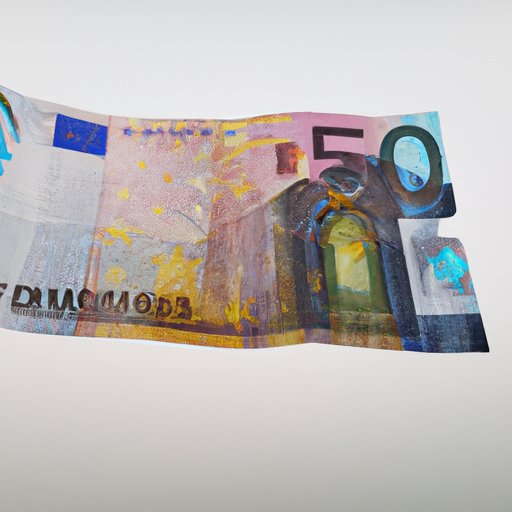Introduction
Money is a ubiquitous part of daily life. We use it to buy everything from groceries to houses, and it’s hard to imagine a world without it. But have you ever stopped to think about what money really is? Is money made out of paper? In this article, we’ll explore the past, present, and future of currency, from the materials used to produce paper money to the rise of digital currencies.
The Value of Money
Money has value because people believe it does. People use money as a medium of exchange, and the more people who use it, the more valuable it becomes. Money also has intrinsic value, which means that it has value in and of itself. For example, gold has intrinsic value because it is a precious metal that is finite in supply.
Paper money, on the other hand, does not have intrinsic value. It only has value because governments say it does. This type of money, often called fiat currency, is backed by the government or central bank that issues it. The amount of paper money in circulation is regulated by the government, which can issue more or less of it as needed.
Paper money has been used in some form for centuries. The first banknotes were issued in China during the 7th century, and paper money began to be used in Europe in the 17th century. By the 20th century, paper money had become the dominant form of currency in most parts of the world.
Security Of Money
Digital currencies are becoming increasingly popular, and many people believe that they are more secure than paper money. Digital currencies use encryption techniques to secure transactions and prevent fraud, while paper money has physical security measures such as holograms, watermarks, and serial numbers.
However, digital currencies are not foolproof. Hacks and other security breaches can occur, and there is a risk of losing money if a digital wallet is lost or stolen. Paper currency has its own risks, as it can be counterfeited or stolen, but a lot of security features have been added to minimize these risks.
The Production of Paper Money
The production of paper money is a complex process that involves several stages. The raw materials used in paper money production include cotton and linen fibers, as well as high-quality wood pulp. The manufacturing process involves the use of water, heat, and pressure to produce paper that is strong, durable, and resistant to wear and tear.
The first banknotes were printed on handmade paper using letterpress printing, which involved the use of individual metal letters that were inked and then stamped onto the paper. Today, banknotes are printed using offset printing, which is faster and more efficient. New technologies like digital printing have been introduced to make banknote production faster and more secure.
Money Laundering
A lot of work goes into ensuring that paper currency is clean and free of contaminants. Governments and central banks have measures in place to detect and reduce the risks of money laundering. These measures include marking banknotes with serial numbers and using ultraviolet and magnetic scanning devices to detect counterfeit notes.
Dirty and contaminated banknotes can pose health risks and damage the environment. For this reason, many countries have started implementing policies that promote the use of digital currencies over paper currency.
The Rise Of Digital Currency
In recent years, digital currencies like Bitcoin have risen in popularity, as they offer a decentralized system of currency that is not controlled by governments or central banks. Digital currencies are based on blockchain technology, which is a public ledger that is transparent and secure.
However, digital currencies have their drawbacks. They can be volatile and subject to wild fluctuations in value. They are also not widely accepted by merchants, which makes them less convenient to use for everyday transactions.
Is Cash Still King?
Despite the rise of digital currencies, paper money is still the most widely used form of currency in most parts of the world. However, attitudes towards cash are changing, and many people are turning to digital payment methods like credit cards and digital wallets.
Banks and financial institutions are also changing their practices, as they adopt new technologies that enable faster and more secure transactions. Many developing countries are also embracing digital currencies as a way to protect their economies from inflation and instability.
The Future Of Currency
The concept of a cashless society is becoming increasingly popular, as digital currencies and payment methods become more prevalent. A cashless society would eliminate the need for physical money, which would make transactions faster, easier, and more secure.
However, there are drawbacks to a cashless society, including concerns about privacy, security, and financial exclusion. A cashless society would also require significant changes to existing financial systems and infrastructure, which would take time and resources to implement.
Conclusion
In conclusion, money is not made out of paper, but rather it is a complex system of currency that has evolved over time. Paper currency continues to be an important part of daily life, but digital currencies are becoming more popular as technology advances. As we move towards a more digital economy, it’s important to consider the pros and cons of different forms of currency, and to develop policies that can ensure a safe, secure, and equitable financial system for everyone.
